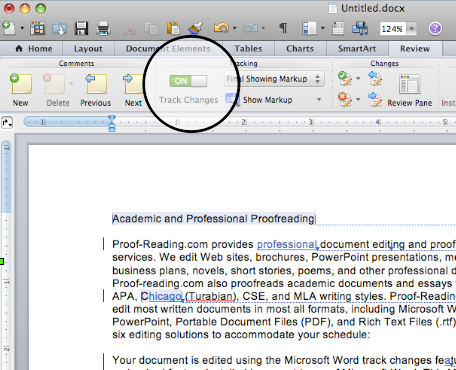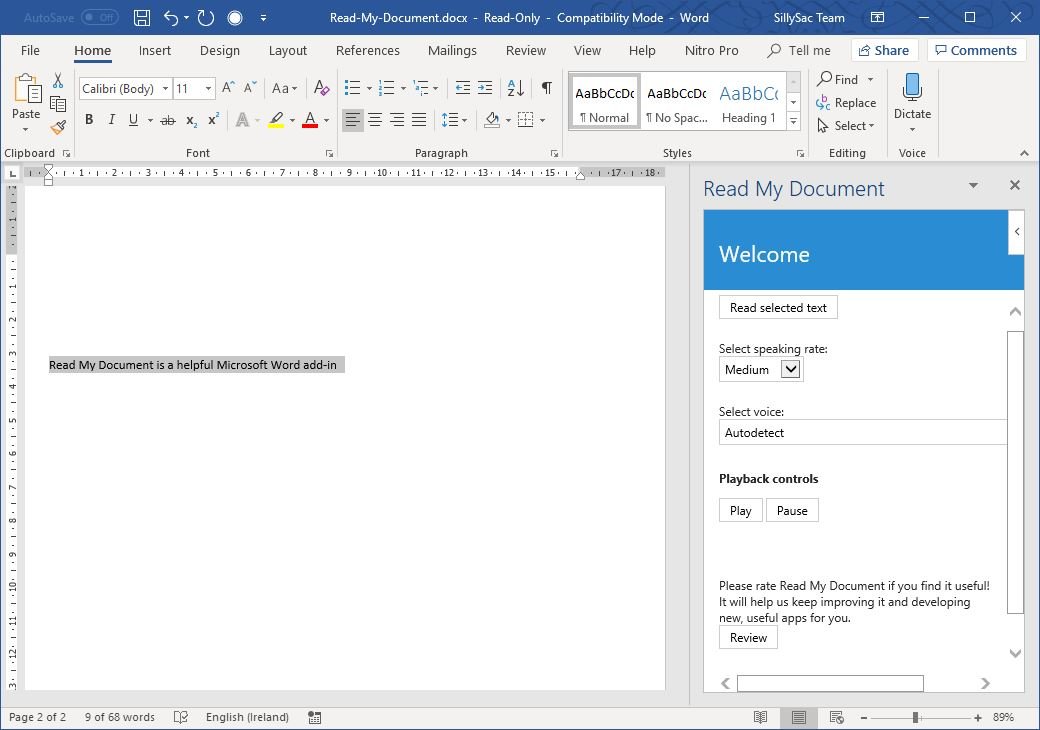

- #READ BACK TO ME ON WORD FOR MAC HOW TO#
- #READ BACK TO ME ON WORD FOR MAC SOFTWARE#
- #READ BACK TO ME ON WORD FOR MAC PASSWORD#
- #READ BACK TO ME ON WORD FOR MAC DOWNLOAD#
Firefox has a "reader" mode which largely helps and works well under Windows.This is similar to #2, however, I might decide it's worth creating a file for podcast if the read text captures my attention, and I'll shift to a #1 process.Using TTS to read selected browser text on long articles I wish to hear while I perform non-attention-demanding tasks.
#READ BACK TO ME ON WORD FOR MAC HOW TO#
Looking at Narrator's interface, I found it very difficult to figure out how to get Narrator to read selected text across applications, i.e., Outlook, Firefox, Word, and so forth. Yes, I can copy and past into Notepad, but that's clumsy.I find errors more easily when I have my Mac read my written text back to me.

Live proof-reading of emails or documents I'm creating.
#READ BACK TO ME ON WORD FOR MAC SOFTWARE#
I used ReadAloud's TTs software in the past, but was always more kludgy than the above. The last time I switched from Mac to Windows, I dearly missed having this. Thanks to bash scripts, the above takes 5 seconds of my time.Using lame, I then convert this to an mp3 and using dropcaster, push the mp3's to a static public location where my podcast client can retrieve it.After text markup is complete, I pass the formatted text through the "say" command, which creates an AIFF of the text-to-speech.For example, this script inserts a "silence" command that helps me identify paragraph markers when I listen to the read text. My current Mac workflow: I copy the source from my email, use a vim script that removes HTML, leaving the text I wish to have read.Converting reformatted text from emails that I wish to have read to me at a later time.I use it in three specific ways, though a combination of the below defines 90% of my use-cases. I've long taken advantage of Mac's Text-to-Speech integration. I perform this only with Open Source tools, too, except for the "say" command. On my Mac, I can provide an input, and get an MP3 TTS file with no user intervention in-between, for my #1 scenario, below. I also wish to emphasize that "copy and paste into a third party TTS application" is unsatisfactory. For example in this 2012 SuperUser post, the questioner has the same issue, with no satisfactory answer provided. One of my use cases is for Narrator to only read selected text, as I outline below. Granted, my use-case isn't related to being visually-impaired. I've been through the Microsoft Narrator documentation, which I've found unhelpful. This post focuses on Text-to-Speech OS integration. Switching OS's, however, has two seemingly insurmountable areas which concern me. However, Apple's recent disappointing and lackluster focus on MacOS and their hardware, and a Lenovo X1 Yoga, 2nd Generation, has caught my attention. LibreOffice and Apache OpenOffice are two such suites.Apple's tight integration of POSIX-compliant file paths and a command line interface, and their historically strong hardware and manufacturing standards have had me on the Mac platform for years. Using open-source software with both Windows and Mac versions is another approach if you are not fully tied to Microsoft Word on the PC. And if you find that the online version of Office is not robust enough for your needs, Microsoft’s various Office 365 subscriptions and software offer better compatibility for a monthly, annual or one-time price.
#READ BACK TO ME ON WORD FOR MAC DOWNLOAD#
You can edit the files online on the computer or on mobile devices - or download them.

With Office Online, the files can be stored on Microsoft’s OneDrive cloud server or in a connected Dropbox account.
#READ BACK TO ME ON WORD FOR MAC PASSWORD#
If you use Hotmail, Skype, or another Microsoft service, you should be able to use the same Microsoft user name and password for Office Online. Microsoft’s free Office Online apps (including Word) work right in the web browser - as long as you sign in with a Microsoft account. However, if you are creating the documents in Microsoft Word on the PC, just staying in Word might be the smoothest approach.


 0 kommentar(er)
0 kommentar(er)
